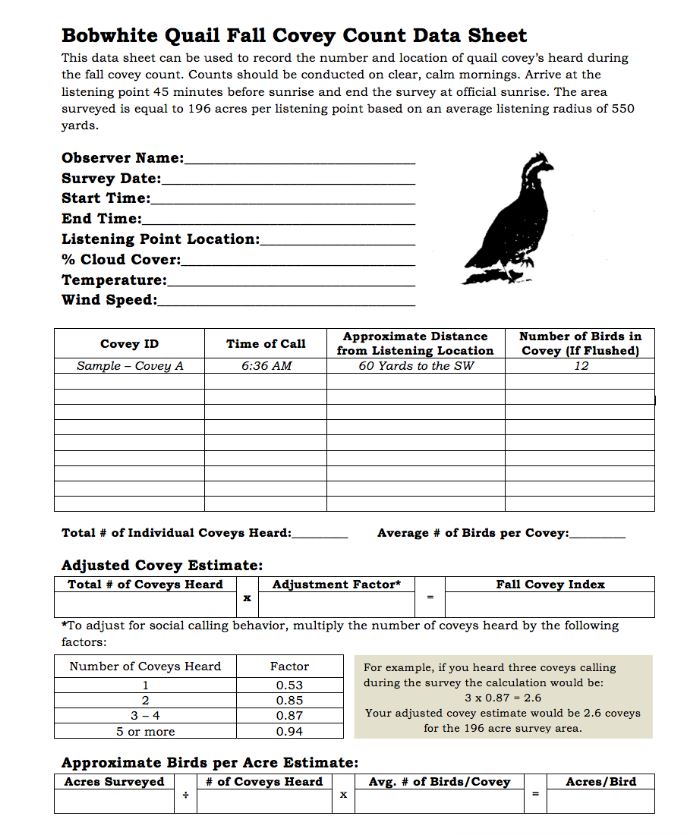How many quail are in a covey? That number can vary, but it’s also important to know how many coveys are on a property. Many quail managers and hunters know they have quail, but probably do not have an estimate of the total number of quail or the average number of quail per covey on their hunting grounds.
This information, data about the number of local birds, could be a major determining factor in whether the location is worth hunting this fall and winter. Completing fall covey count surveys can be a valuable tool to help resolve these difficult hunt/no-hunt that quail hunters face each fall.
Bobwhite Coveys
Bobwhite quail begin forming coveys in early August. By September, these groups communicate through early morning “wake-up” calls. The seasonal calling peaks around mid-October and offers an opportunity to for hunters and managers to collect quality data regarding the number of quail on a specific piece of property. This information can be used to determine the number of coveys that call the property home.
Fall Call
In the fall, quail make a “koi-lee” whistle which is brief call that averages around 30 seconds, or less. It’s made early in the morning, typically beginning about 30 minutes before sunrise. Depending on the number of coveys that may be present, the calling lasts only a few minutes. Get there early or you may miss it!
When it comes to estimating the number of quail coveys on a property, clear mornings with light breezes are the best time to survey. Once the calling session ends, flushing the coveys is the best way to determine the size of the covey. It will also help you get an about where the quail roosting habitat on the property is located.
Fall quail surveys can help with overall quail management decisions. They can be a valuable tool for managing quail and covey numbers and can help with harvest decisions. Completing fall covey count surveys is recommended for anyone interested in quail management. Here’s how you do it:
Setup Call Points
Establish listening call count points at least 1,000 yards from each other. This guards against coveys being counted more than once if multiple persons are listening from different locations during the same morning. It helps to printi an aerial map of the property and mark the points before hand.
Listen for Calling Quail
Observers need to arrive at the point at least 45 minutes before sunrise and listen for each covey’s call up until sunrise. Marking the time of the call and the approximate location of each calling covey on a map helps provide a clearer picture of the number of coveys which may be present. It’s best to be conservative in the number of individual coveys.
Evaluate Covey Data
Crunch time — time to analyze the results. Enter data into a Fall Covey Count Data Sheet, an adjusted fall covey index can be determined for each survey point. In addition, if a covey/s are flushed, the number of quail per acre can be estimated with this form.
Survey accuracy is improved when numerous points are established on a property, or at least the ones that exist are counted several times. Small properties may only allow for one survey point while larger ones are only limited by size and suitable quail habitat.
So how many quail and coveys do you have? It’s an important question for folks interested in quail, but a small investment (time) can provide valuable quail hunting and management information for the fall and beyond.
